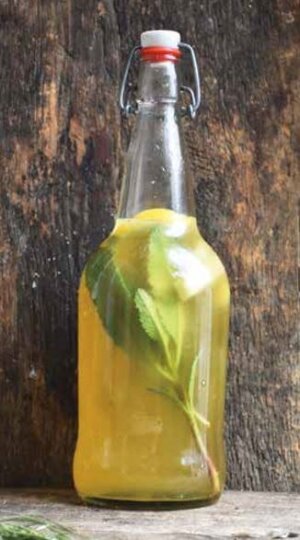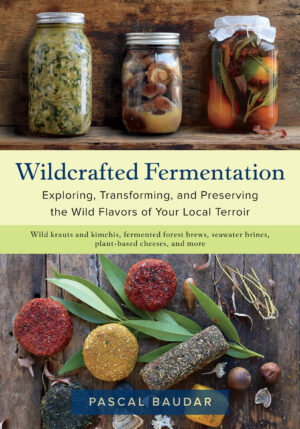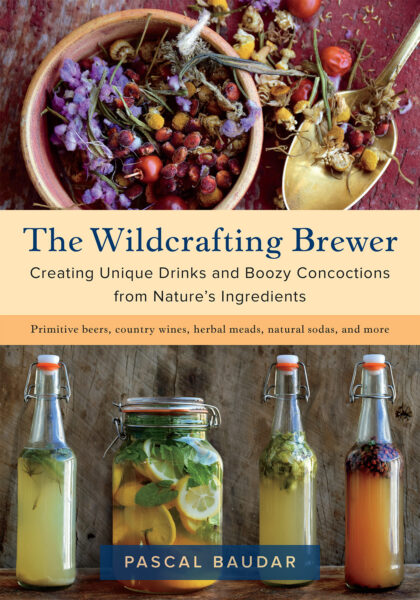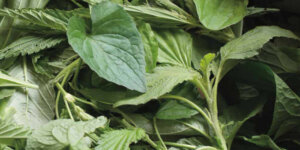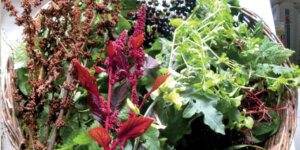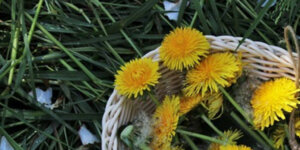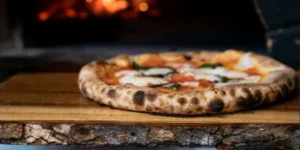How to Make Naturally Fermented Raw Soda
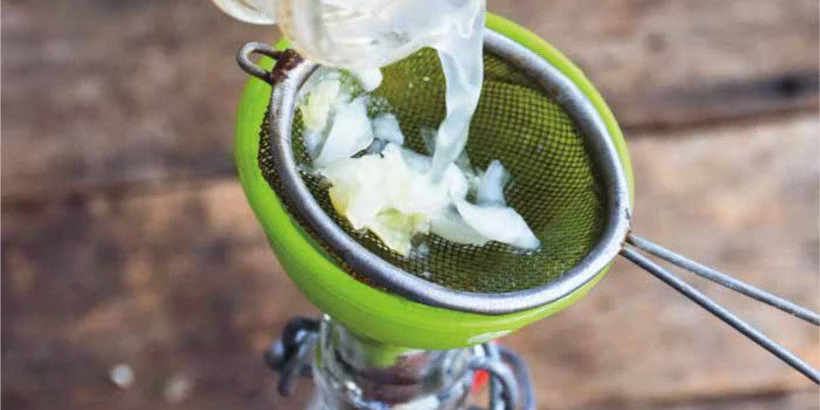
On your way to the store for a soda? Stop right there! Your backyard has plenty of delicious ingredients to make an all-natural soda. Pick and choose your own herbs for a custom, fermented raw soda without all the unhealthy sugars and additives.
The following is an excerpt from Wildcrafted Fermentation by Pascal Baudar. It has been adapted for the web.
RECIPE: Naturally Fermented Raw Soda
This is a very simple raw soda. You can replace my local herbs with all kinds of aromatic and tasty herbs of your choice, foraged or not, such as mint, anise hyssop, sages, or elderflowers.
I’ve made similar ferments with herbs such as mugwort, California sagebrush, various wild mints, yarrow, elderflowers, pinyon pine branches, white fir (Abies concolor), spruce tips, and others.
Ingredients for a 32-ounce swing-top bottle (1 L)
- 1 sprig black sage
- 1 sprig yerba santa
- ¾ ounce (21 g) fresh gingerroot
- 1 lemon
- 3¼ cups (769 ml) water
- ⅓ cup (79 ml) maple syrup
- ¼ cup (59 ml) Culture Starter
Procedure
- There’s not much to do here. Place the fresh herbs in your bottle or jar; I like to bruise them gently with my fingers, just enough to facilitate flavor extraction. My next steps are to dice the ginger such that the pieces can go through the opening and then juice my lemon.
- Pour the water into the bottle, add the ginger pieces, lemon juice, maple syrup, and culture starter. You want the contents to reach up to the bottom of the bottle’s neck but no higher. Close the top.
- Ferment for 2 to 4 days at room temperature and check the carbonation by opening the top slightly. Usually I get enough carbonation on day 3 or 4.
If I decide to drink the soda at this point, there is no need to strain the contents, but if I’d like to keep it in the fridge for a few more days, I first strain the liquid into a new bottle and leave it at room temperature for another day. This is usually enough to get some decent carbonation going again. Then I place the bottle in the fridge. Every couple of days, I still check the bottle and burp it if necessary.
Recommended Reads
Recent Articles
Whether you are an expert forager or new to the skill, it’s important to understand how to store your freshly picked bounty. Luckily, author Alan Bergo has the lowdown on how to harvest wild greens and cook them for the best storage so your harvest can stay fresh for days after being picked! The following…
Read MoreForaging wild plants in your area is a great way to shake up your culinary delights. Don’t know where to start? Below are our best foraging posts to get you started on your hunt for wild edibles. Foraging 101: Where to find your bounty We’ve given you descriptions. We’ve given you recipes. We’ve given you…
Read MoreYou can forget about waiting for your wine to ferment, because we have a recipe for dandelion beer that will be ready in just a week! Who knew those weeds in your backyard could make such a fun beverage? The following excerpt is from Pascal Baudar’s Wildcrafting Brewer. It has been adapted for the web.…
Read MoreNothing can be compared to the taste of a fresh, hot slice of pizza that came straight out of a wood-fired oven. By building your own clay wood-fired pizza oven, you’ll have this cheesy delicacy at your fingertips whenever you’re craving it! VIDEO: Building An Outdoor Clay Wood-Fired Pizza Oven Take it from Richard Miscovich,…
Read MoreChances are, you’ve seen cattails growing on the edge of your local lake or stream at least once or twice. Instead of just passing these plants, try foraging for and cooking them to create delicious seasonal dishes! The following excerpt is from The New Wildcrafted Cuisine by Pascal Baudar. It has been adapted for the…
Read More

